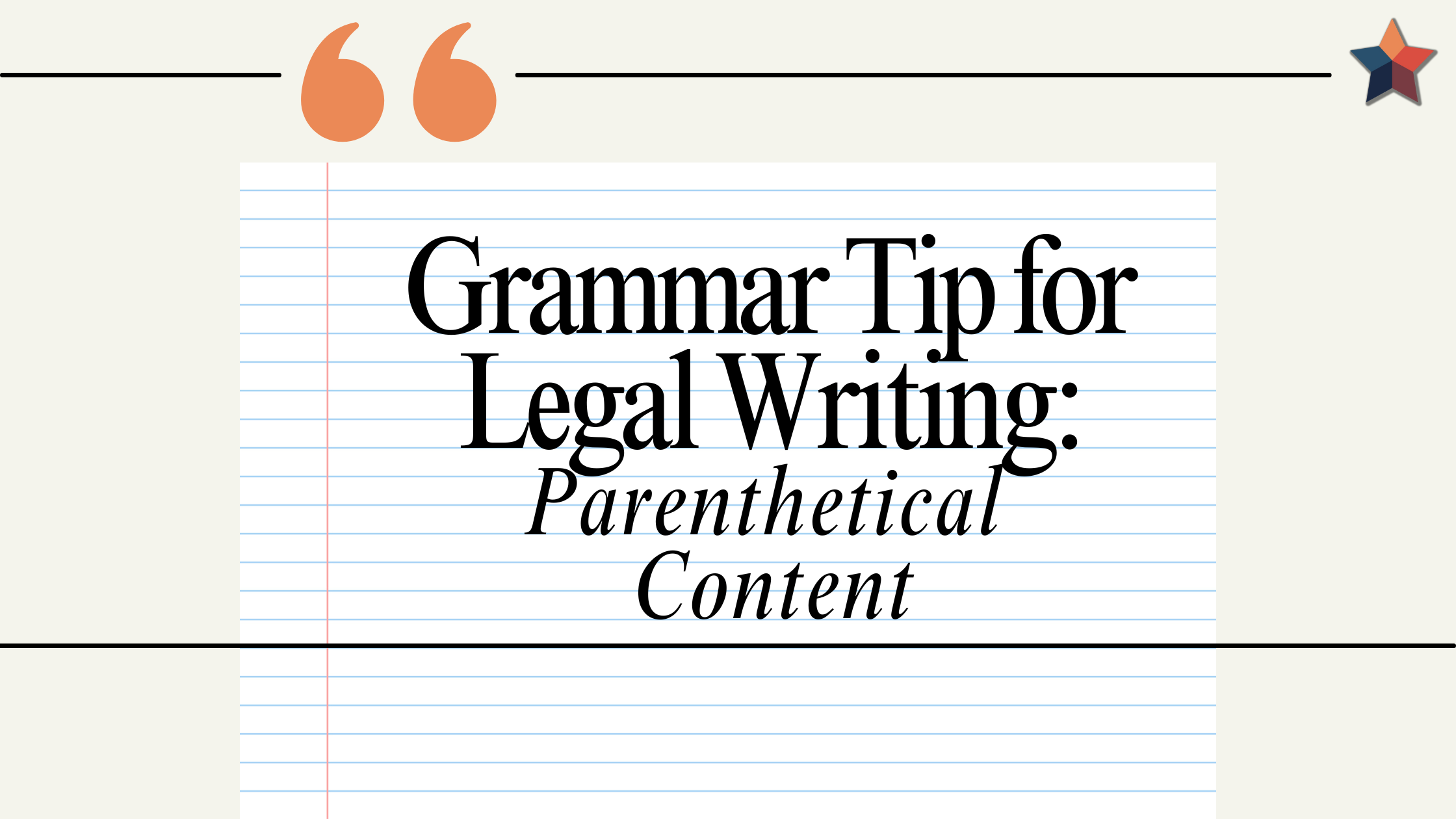Grammar Tip: Parenthetical Content
Published on June 16, 2020 From The Editors

Parenthetical content is a word, phrase, or sentence that functions as an aside, briefly departing from the main discourse. The punctuation normally used to separate parenthetical content from the main text is, of course, parentheses, but parenthetical commas or em dashes may also be used.
Setting off text with parentheses usually de-emphasizes it, setting off text with commas usually carries neutral emphasis, and setting off text with em dashes usually emphasizes it:
- John brought a stray dog (a bull terrier) to grandma’s house.
- John brought a stray dog, a bull terrier, to grandma’s house.
- John brought a stray dog—a bull terrier—to grandma’s house.
When parenthetical text falls at the end of a sentence, omit the closing parenthetical comma or em dash, but include the closing parenthesis:
- John brought home a stray dog (a bull terrier).
- John brought home a stray dog, a bull terrier.
- John brought home a stray dog—a bull terrier.
Note that, as with the comma, parentheses and the em dash have uses other than just setting off parenthetical content. I won’t get into all of that here.
As a general rule, parenthetical text shouldn’t influence the syntax of the sentence that the parenthetical text interrupts. Try temporarily omitting the parenthetical content until you’re happy with the sentence’s grammar, and then reinsert the parenthetical content:
- John’s family adores his latest stray dog.
- John’s family (Bill, Jane, and grandma) adores his latest stray dog.
If a sentence seems awkward after reinserting the parenthetical content, it’ll probably seem awkward to your reader too:
- John’s child—and the children next door—adores his latest stray dog.
Rewriting might be in order:
- The children next door seem to adore John’s latest stray dog as much as his son does.
Of course, how you rewrite the sentence depends on exactly what you’re trying to convey and what part you want to have focus.
About Em Dashes
An em dash is longer than a hyphen or an en dash. Of the three, the hyphen is the shortest. The en dash is about the width of the uppercase letter N, and the em dash is about the width of the uppercase letter M. If the software you’re using doesn’t include special characters such as the em dash, one solution is to use a pair of hyphens instead, although there is the risk of lines breaking between the two hyphens.
Whether you set your em dash with a space on each side is up to you. Both “a stray dog—a bull terrier” and “a stray dog — a bull terrier” are acceptable, but strive for consistency throughout any given work. If the software you’re using doesn’t allow lines to break immediately before or after em dashes that don’t have the surrounding spaces, the readability will probably benefit from including the surrounding spaces. If you include the spaces, you could also get away with using a single hyphen (“a stray dog – a bull terrier”) to avoid having the line break between the two hyphens.
Parenthesis Versus Parentheses
The singular parenthesis (note the -is ending) refers to a single mark, either an opening or a closing parenthesis. The plural parentheses refers to more than one parenthesis. This follows the same pattern as the singular crisis and plural crises, the singular hypothesis and plural hypotheses, and so on.

Roger Siebert
Roger Siebert is senior editor at Texas Bar Books, where he has worked for eighteen years. Roger earned a BA in English at the University of Missouri–Kansas City and an MA in creative writing at Florida State University, where he also taught first-year composition. In his spare time he enjoys sailing and rowing his homemade boat.